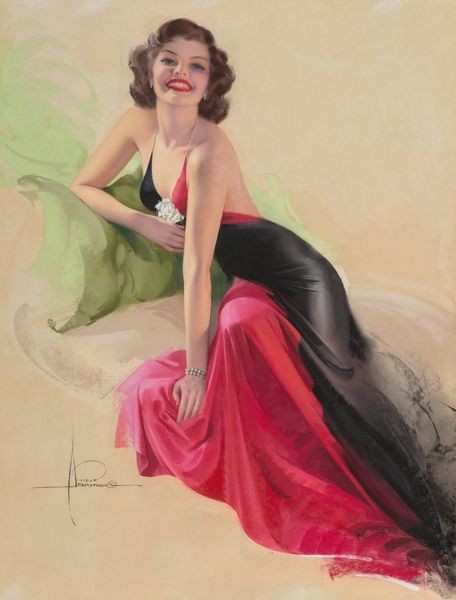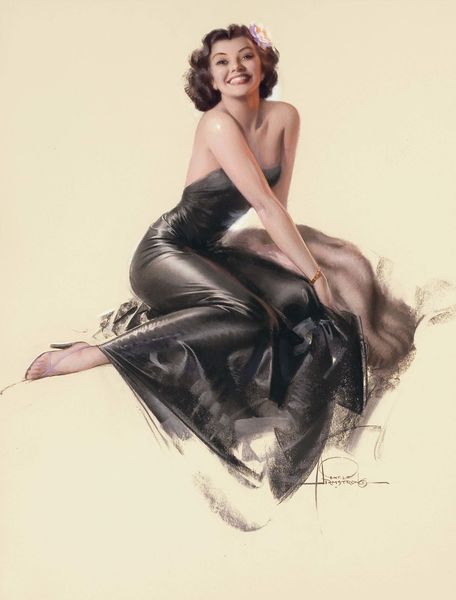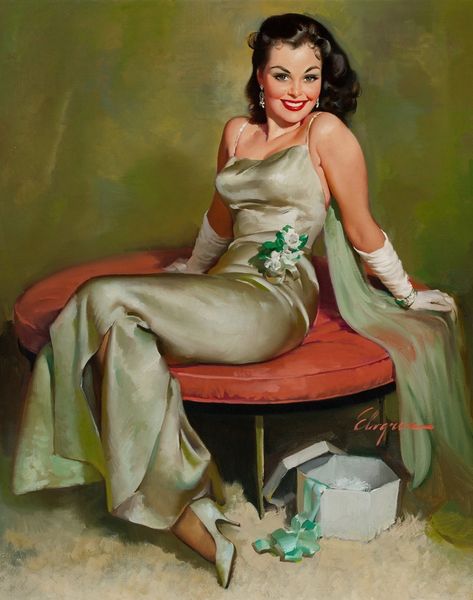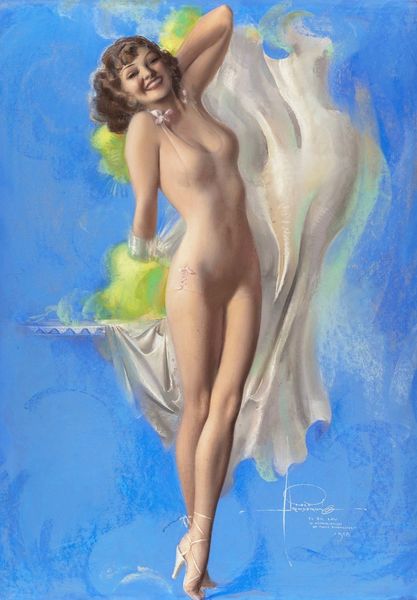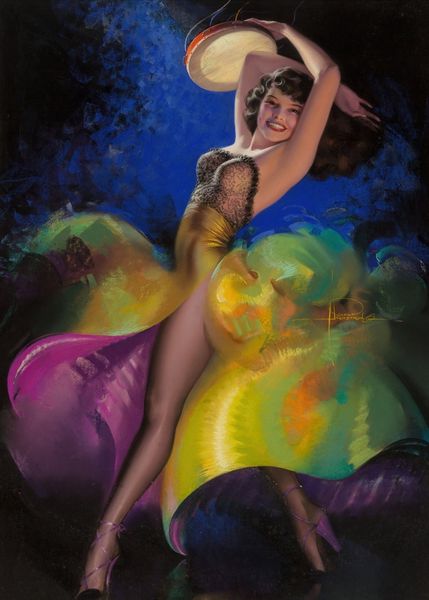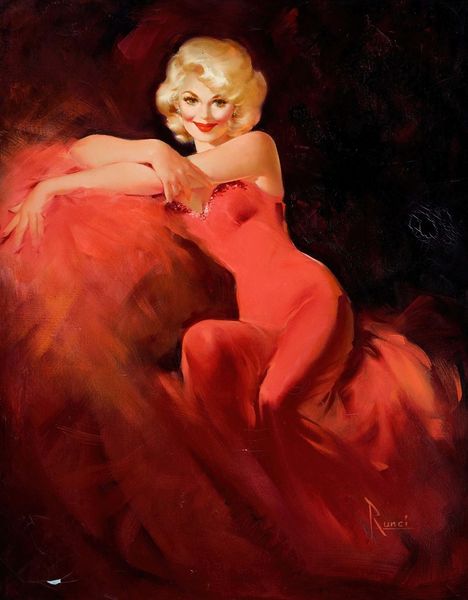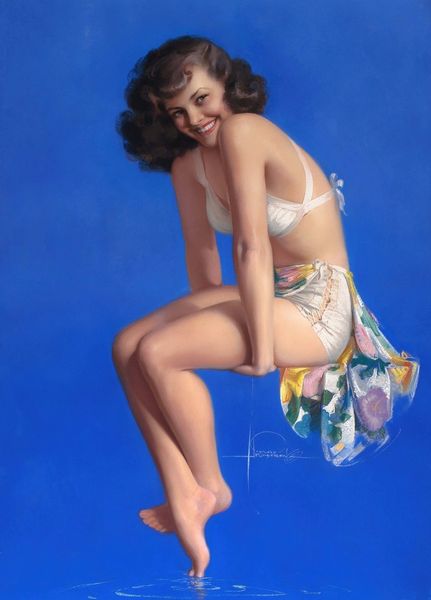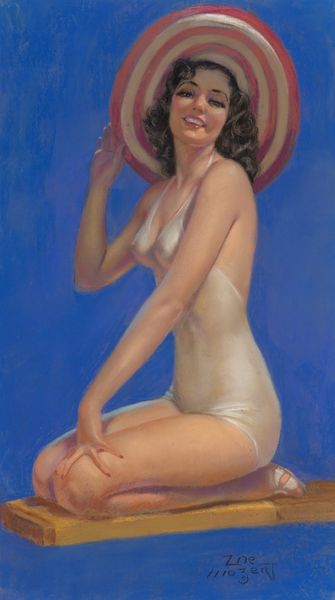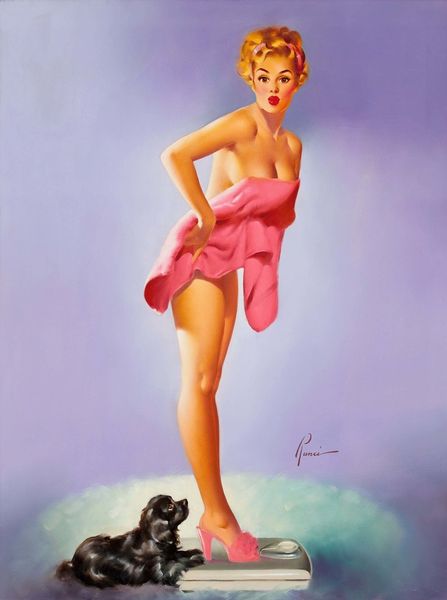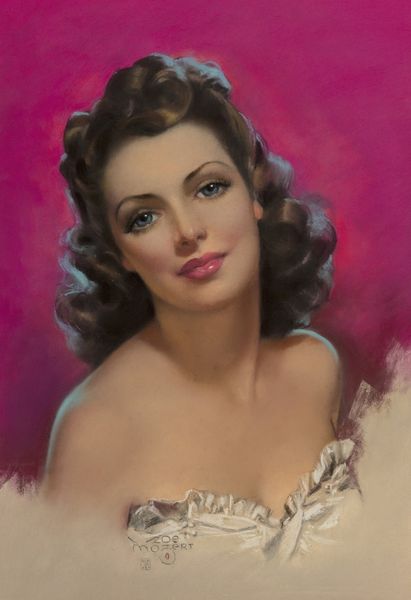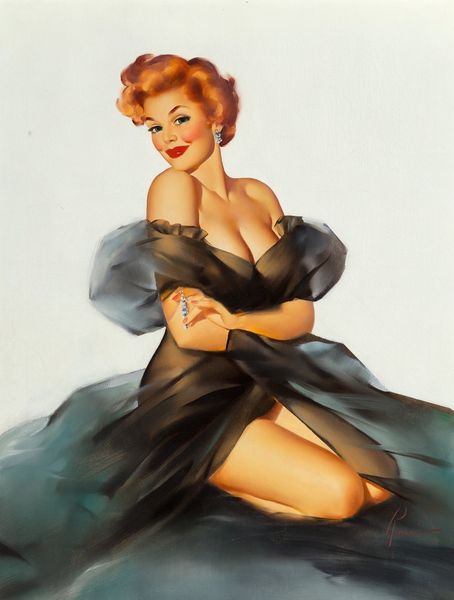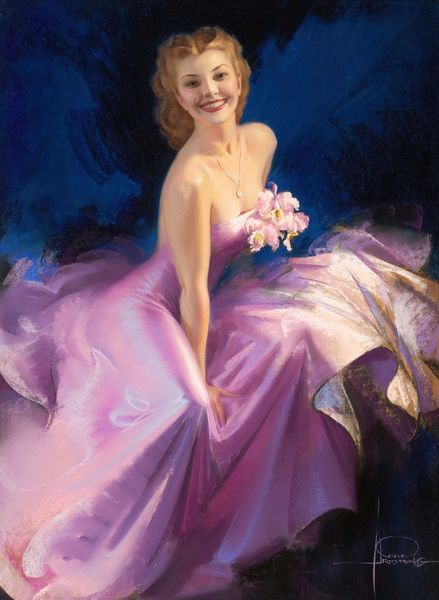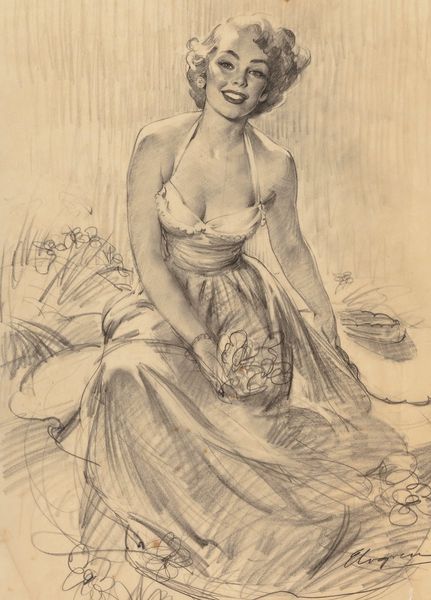
painting, oil-paint
#
portrait
#
painting
#
oil-paint
#
figuration
#
modernism
#
erotic-art
Copyright: Modern Artists: Artvee
Editor: Here we have Rolf Armstrong's painting, “Jewel Flowers”. It looks like an oil painting of a woman in what I imagine is art-deco style, but the details of the woman's garments strike me in a peculiar way. The material seems deliberately artificial and I would expect the art to attempt to obscure it with its technique; in this case, I believe the reverse may be happening! How do you read this image? Curator: It’s interesting you bring up the materiality. For me, it's vital. Armstrong, like many commercial artists of the time, engaged directly with mass culture and its production. This piece isn't just a painting; it’s a commodity *about* commodities, made for consumption. Consider the ‘jewel’ reference of the artwork's title in connection to the semi-nude depiction and ‘artificiality’ of her presentation. Editor: That's a great way to frame it. You mean how the smooth brushstrokes, typical of oil painting, seem to intentionally highlight, rather than diminish, the sheen and texture of those synthetic fabrics, like the nylon stockings, and so forth? Curator: Exactly! And consider the artist's hand as labor, explicitly made apparent to the viewer, highlighting its constructedness rather than any "natural" aesthetic. How might the modern modes of reproduction available factor into Armstrong's chosen methods? Editor: That's intriguing. Because these images would have been so widely distributed through magazines and prints, there's a self-aware element to how stylized the whole image is. Not aspiring to fine-art but leveraging it into something almost meta. So we have an oil painting that references being turned into cheap mass-produced media, but is originally an oil painting… I suppose it reflects the culture as a whole, learning what to value from reproductions rather than the ‘real thing.’ Thank you! Curator: A fitting assessment that I, too, am learning from this dialogue with you! The work functions then as a mirror reflecting back the values and desires of a consumer culture fixated on spectacle.
Comments
No comments
Be the first to comment and join the conversation on the ultimate creative platform.
